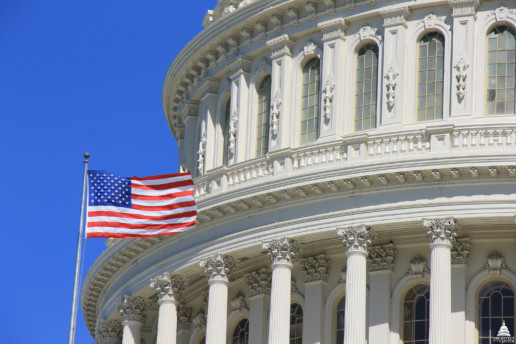How Employers Should Proceed After the AHCA’s Collapse
Take a look at the great article from Employee Benefits Advisor on what employers need to know about healthcare with the collapse of the AHCA by Alden J. Bianchi and Edward A. Lenz.
The stunning failure of the U.S. House of Representatives to pass the American Health Care Act has political and policy implications that cannot be forecasted. Nor is it clear whether or when the Trump administration and Congress will make another effort to repeal and replace, or whether Republicans will seek Democratic support in an effort to “repair,” the Affordable Care Act. Similarly, we were unable to predict whether and to what extent the AHCA’s provisions can be achieved through executive rulemaking or policy guidance.
Here are some ways the AHCA’s failure could impact employers in the near term.
Immediate impact on employers
Employers were not a major focus of the architects of the ACA, nor were they a major focus of those who crafted the AHCA. This is not surprising. These laws address healthcare systems and structures, especially healthcare financing. Rightly or wrongly, employers have not been viewed by policymakers as major stakeholders on those issues.
In a blog post published at the end of 2014, we made the following observations:
The ACA sits atop a major tectonic plate of the U.S. economy, nearly 18% of which is healthcare-related. Healthcare providers, commercial insurance carriers, and the vast Medicare/Medicaid complex are the law’s primary stakeholders. They, and their local communities, have much to lose or gain depending on how healthcare financing is regulated. The ACA is the way it is largely because of them. Far more than any other circumstance, including which political party controls which branch of government, it is the interests of the ACA’s major stakeholders that determine the law’s future. And there is no indication whatsoever that, from the perspective of these entities, the calculus that drove the ACA’s enactment has changed. U.S. employers, even the largest employers among them, are bit players in this drama. They have little leverage, so they are relegated to complying and grumbling (not necessarily in that order).
With the AHCA’s collapse, the ACA remains the law of the land for the foreseeable future. The AHCA would have zeroed out the penalties on “applicable large” employers that fail to make qualified offers of health coverage, but the bill’s failure leaves the ACA’s “play or pay” rules in full force and effect. The ACA’s reporting rules, which the AHCA would not have changed, also remain in effect. This means, among other things, that many employers, especially those with large numbers of part-time, seasonal, and temporary workers that face unique compliance challenges, will continue to be in the position of “complying and grumbling.”
This does not mean that nothing has changed. The leadership of the Departments of Health and Human Services, Labor and Treasury has changed, and these agencies are now likely to be more employer-friendly. Thus, even though the ACA is still the law, the regulatory tone and tenor may well be different. For example, although the current complex employer reporting rules will remain in effect, the Treasury and IRS might find administrative ways to simplify them. Similarly, any regulations issued under the ACA’s non-discrimination provisions applicable to insured health plans (assuming they are issued at all) likely will be more favorable to employers than those issued under the previous administration.
There are also unanticipated consequences of the AHCA’s failure that employers might applaud. We can think of at least two.
1. Stemming the anticipated tide of new state “play or pay” laws
The continuation of the ACA’s employer mandate likely will put on hold consideration by state and local governments of their own “play or pay” laws.
In anticipation of the repeal of the ACA’s employer mandate, the Governor of Massachusetts recently introduced a budget proposal that would reinstate mandated employer contributions to help cover the costs of increased enrollment in the Medicaid and Children’s Health Insurance Program, known as MassHealth. Under the proposal, employers with 11 or more full-time equivalent employees would have to offer full-time employees a minimum of $4,950 toward the cost of an employer group health plan, or make an annual contribution in lieu of coverage of $2,000 per full-time equivalent employee. While the Governor’s proposal is not explicitly conditioned on repeal of the ACA’s employer mandate, the ACA’s survival may prompt a reconsideration of that approach.
California lawmakers were also considering ACA replacement proposals, including a single-payer bill introduced last month by Democratic state senators Ricardo Lara and Toni Atkins. Had the ACA’s employer mandate been repealed, those proposals were likely just the tip of an iceberg. When the ACA was enacted in 2010, Hawaii, Massachusetts, and San Francisco were the only jurisdictions with their own healthcare mandates on the books. But in the prior two-year period, before President Obama was elected and made healthcare reform his top domestic priority, more than two dozen states had introduced various “fair share” health care reform bills aimed at employers.
Most of the state and local “play or pay” proposals would have required employers to pay a specified percentage of their payroll, or a specified dollar amount, for health care coverage. Some required employers to pay employees a supplemental hourly “health care” wage in addition to their regular wages or provide health benefits of at least equal value. California, Illinois, Pennsylvania, and Wisconsin considered single-payer proposals.
To be sure, any state or local “play or pay” mandates would be subject to challenge based on Federal preemption under the Employee Retirement Income Security Act (ERISA). While some previous “play or pay” laws were invalidated under ERISA (e.g., Maryland), others (i.e., San Francisco) were not. In sum, given the failure of the AHCA, there would appear to be no rationale, at least for now, for any new state or local “play or pay” laws to go forward.
2. Avoiding upward pressure on employer premiums as a result of Medicaid reforms
The AHCA proposed to reform Medicaid by giving greater power to the states to administer the Medicaid program. Under an approach that caps Medicaid spending, the law would have provided for “per capita allotments” and “block grants.” Under either approach, the Congressional Budget Office, in its scoring of the AHCA, predicted that far fewer individuals would be eligible for Medicaid.
According to the CBO: CBO and JCT estimate that enacting the legislation would reduce federal deficits by $337 billion over the 2017 to 2026 periods. That total consists of $323 billion in on-budget savings and $13 billion in off-budget savings. Outlays would be reduced by $1.2 trillion over the period, and revenues would be reduced by $0.9 trillion. The largest savings would come from reductions in outlays for Medicaid and from the elimination of the ACA’s subsidies for non-group health insurance.
While employers rarely pay attention to Medicaid, the AHCA gave them a reason to do so. Fewer Medicaid-eligible individuals would mean more uncompensated care — a significant portion of the costs of which would likely be passed on to employers in the form of higher premiums. As long as the ACA’s expanded Medicaid coverage provisions remain in place, premium pressure on employers will to that extent be avoided.
Long-term impact on employers
As we conceded at the beginning, it’s not clear how the Republican Congress and the Administration will react to the AHCA’s failure. If the elected representatives of both political parties are inclined to try to make the current system work, however, we can think of no better place that the prescriptions contained in a report by the American Academy of Actuaries, entitled “An Evaluation of the Individual Health Insurance Market and Implications of Potential Changes.”
The actuaries’ report does not address, much less resolve, the major policy differences between the ACA and the AHCA over the role of government — in particular, the extent to which taxpayers should be called on to fund the health care costs of low-and moderate-income individuals, and whether U.S. citizens should be required to maintain health coverage or pay a penalty. And even if lawmakers can reach consensus on those contentious issues, they still would have to agree on the proper implementing mechanisms.
But whatever the outcome, employers are unlikely to play a major role.
See the original article Here.
Source:
Bianchi A. & Lenz E. (2017 April 6). How employers should proceed after the AHCA's collapse [Web blog post]. Retrieved from address https://www.employeebenefitadviser.com/opinion/how-employers-should-proceed-after-the-ahcas-collapse
HSAs to see explosive growth
Are you using HSAs to help save money on your healthcare cost? Find out from this article by Employee Benefit News on how the market for HSAs is set to grow exponentially over the next few years by Kathryn Mayer.
It’s about time for health savings accounts to take the spotlight. And that’s going to be a good thing for employees, industry experts say: Not only will HSAs help workers with their healthcare expenses, but the savings vehicles also will put them on a better track for retirement planning.
“The market is going to blow up,” American Retirement Association CEO Brian Graff said this week during the NAPA 401k Summit in Las Vegas, citing new healthcare reform proposals — including the GOP’s American Health Care Act — as well as a better understand of HSAs as reasons for the predicted growth.
The ACHA, which doubles HSA contributions, “dramatically increases the incentive for employers to offer high-deductible health plans,” he said. The GOP plan expands the allowable size of healthcare savings accounts that can be coupled with high-deductible insurance plans, up to $6,550 for an individual or $13,100 for a family. It also expands qualifying expenses to include health insurance premiums, over-the-counter medications and preventive health costs.
By 2018, there will be 27 million HSA accounts and more than $50 billion in HSA assets, according to estimates from the Kaiser Family Foundation cited by Graff. Currently, there are 18 million accounts and $34.7 billion in assets.
Those statistics — and proposed healthcare reforms — are catching the eye of the retirement industry: The accounts have the potential to become “more compelling than a 401(k),” due to tax-deductible and tax-deferred incentives, Graff said.
“We have to think about what this means for our industry,” he said.
In a live poll during a conference keynote, three-quarters of retirement advisers noted they do not offer HSA advisory services. That number, Graff predicts, will change radically over the next two years.
Current proposals are positioning HSAs a hybrid of medical and retirement savings, Graff said. “It’s not just a health account, it’s a savings account.” Healthcare expenses are a major concern for retirees and often cause employees to push back plans for retirement. If HSA funds are not needed for medical expenses, the money can be withdrawn after age 65 and taxed as ordinary income.
Graff says plan sponsors and retirement advisers should encourage employees to first max out their HSAs and then match their 401(k)s.
The HSA is “the nexus between healthcare and retirement,” Daniel Bryant, an advisor with Sheridan Road, said during a standing-room only panel on HSAs Monday.
Meanwhile, added panelist Ryan Tiernan, a national accounts manager with American Funds, “it’s the biggest jump ball no one has cared to jump to. HSAs are probably the most efficient way to save and invest for your biggest expense in retirement.”
See the original article Here.
Expert: The staggering new retirement savings number millennials have to hit
Have your millennial workers started saving for retirement? If not take a look at this great article from HR Morning about the amount of money millennials need to save for retirement by Christian Schappel.
Want to jolt your younger workers into contributing more to your company-sponsored retirement plans? Just show them this figure.
After looking at several studies, estimates and financial experts’ opinions, Robert Powell, USA Today’s retirement planning expert and editor of Retirement Weekly, is predicting that millennials will need upwards of $2.5 million saved to comfortably retire.
That estimate is for the youngest millennials — those born in the late 1990s.
The news isn’t quite as bleak for those born in the 1980s. Their retirement savings goal, according to Powell: $1.8M.
Why so much?
Here are the numbers behind the estimates.
Powell’s assuming millennials will need to live on between $30K and $40K annually in retirement (in today’s dollars).
Plus, a modest rate of inflation (2%) will make $1M of today’s dollars worth about $530K in 32 years, and roughly just $386K in 48 years.
You can see Powell’s breakdown in more detail here.
The bottom line is this: For today’s millennials to hit that $2.5M number in 48 years, Powell said they’d need to save about $1,000 per month — and that’s assuming there’s 5% growth on their investments annually. That’s a staggering amount that, most likely, your employees aren’t coming close to hitting.
Still, every little bit helps. And if these figures can encourage employees to increase their savings even a little, they’ve done their job.
See the original article Here.
Source:
Schappel C. (2017 February 23). Expert: the staggering new retirement savings number millennials have to hit [Web blog post]. Retrieved from address https://www.hrmorning.com/expert-the-staggering-new-retirement-savings-number-millennials-have-to-hit/
Debt should be priority in financial wellness programs
Do you know what your employees prioritize in their financial wellness program? Take a look at this article from Employee Benefits News about how more employees are placing debt as their number one priority in their financial wellness plans by Kathryn Mayer.
As research continues to pile up about employees’ dire financial state, many employers are left wondering how best to help their workers become financially stable.
Step one? Help them get rid of debt.
“Debt is the biggest [financial well-being] issue right now,” Meghan Murphy, director of thought leadership at Fidelity Investments, said Tuesday during the NAPA 401k Summit in Las Vegas. “Debt is becoming a way of life for all generations.”
There’s a “huge focus” for employers to take action right now in helping employees pay down student loans, Murphy said. It’s an issue plaguing everyone from millennials entering the workforce with massive amounts of debt to baby boomers who have their own student loans and are looking to finance their children’s education as well.
“Not only is [student loan repayment] great for retention, but it makes employees feel great,” she said.
Though student loan debt is garnering more attention in the workforce, it should not be the only area of focus, she said. Credit card debt, 401(k) loans and mortgage loans should also be priorities. In particular, many employers are beginning to put plans in place for ways to manage 401(k) loans by limiting the number of loans allowed or putting a waiting period in place for employees to get the money. “People are very attached to the concept that they can have the money if needed, but we have to find a way to stop that.
“A lot of education is needed in the workplace with debt — student loan debt, credit card debt … there’s not a single focus. If [employees] can pay down debt in general, [they] can save more. Even if employees can save a little bit, with whatever tools we can build and whatever tools and engagement employers offer, that would go a long way.”
Emergency savings also should be a big area of focus for financial wellness,” Murphy said. According to Fidelity’s research, employees do not think long term when it comes to financial goals; 27% of employees only think about the next few months when it comes to money. People who lack emergency savings are twice as likely to say they do not feel good about their finances, Murphy added.
“Most people don’t have an emergency savings account, and most people who do are afraid to spend it,” she said.
What the industry should do — and is starting to do — is to come up with ways to automate emergency savings, similar to automating retirement accounts savings.
Overall, employees’ financial state is pretty dire, Murphy said, citing Fidelity Investment research. In addition to meager savings, financial stress is wreaking havoc in the workplace. More than half of millennials say they’re less committed to work when experiencing money problems, and 28% say they are distracted at work because of it. Another 24% of workers say they avoid medical treatment due to financial problems.
“It’s all very cyclical,” Murphy said. “If you have a health issue, it can impact your money; it can impact your job. If you have a money issue, it can impact your health; it can impact your job. And it all impacts our happiness.”
The overall takeaway is financial wellness is needed in a big way.
“Employees really, really want help to make financial decisions and employers are starting to step up to take this role,” she said.
See the original article Here.
Source:
Mayer K. (2017 March 21). Debt should be priority in financial wellness programs [Web blog post]. Retrieved from address https://www.benefitnews.com/news/debt-should-be-priority-in-financial-wellness-programs?tag=00000151-16d0-def7-a1db-97f03c840000
Why sitting is the new office health epidemic
Is your health starting to suffer from sitting down at work all day? Take a look at this interesting piece from Employee Benefits Advisor about the effects that sitting down all day can have on your health by Betsy Banker.
In the continuing conversation about employee health, there’s a workplace component that isn’t getting the attention it should— and it’s something that workers do the majority of every workday.
Sitting has become the most common posture in today’s workplace, and computer workers spend more than 12 hours doing it each day. Science tells us that the consequences are great, but our shared cultural bias toward sitting has stifled change. Many employees and company leaders struggle to balance well-being and doing their work. And it’s time for employers to do something about it.
Rather than accept the consequences that come as a result of the sedentary jobs employees (hopefully) love, it’s time to elevate the office experience to one that embraces movement as a natural part of the culture. Such a program will address multiple priorities at once: satisfaction, engagement, health and productivity. Organizations of every size and structure should embrace a “Movement Mindset” and say goodbye to stale, sedentary work environments.
There are many benefits to incorporating the Movement Mindset:
· Encourages face time. As millennials and Generation Z take over the office, attracting and retaining top talent is a key initiative for companies. Especially in light of the Society for Human Resource Management findings that 45% of employees are likely to look for jobs outside their current organization within the next year. Research has shown that Gen Z and millennials crave in-person collaboration, and users of movement-friendly workstations (particularly those ages 20 to 30) report being more likely to engage in face time with coworkers than those using traditional sit-only workstations.
Standing meetings tend to stay on task and move more quickly. Their informal nature means they can also be impromptu. Face time has the added benefit of building culture and social relationships, increasing brainstorming and collaboration, and creating a more inclusive work environment.
· Keeps you focused. For those who sit behind a desk day in and day out -- which, according to our research, about 68% of workers do -- it can be a feat to remain focused and productive. More than half of those employees admit to taking two to five breaks a day, and another 25% take more than six breaks per day to relieve the discomfort and restlessness caused by prolonged sitting. It may not seem like much, but considering that studies have shown it can take a worker up to 20 minutes to re-focus once interrupted, this could significantly impact the productivity of today’s office workers.
It’s time to connect the dots between extended sitting, the ability to remain focused and the corresponding effect these things have on the overall health of an organization. Standing up increases blood flow and heart rate, burns more calories and improves insulin effectiveness. Individuals who use sit-stand workstations report improved mood states and reduced stress. Offering options for employees to alternate between sitting and standing during the day could be the key to effectively addressing restlessness while improving focus and productivity.
· Addresses sitting disease. The average worker spends more than 12 hours in a given day sitting down. In the last few years, the health implications surrounding a sedentary lifestyle are starting to come to light (like the increased risk of heart disease, diabetes and early mortality). It’s a vicious cycle where work is negatively affecting health, and poor health is negatively impacting engagement and productivity. Not to mention, the benefits span long and short term, with impacts on employee absenteeism and presenteeism, as well as health and healthcare costs. Offering sit-stand options to incorporate movement back into a worker's daily regimen is a great way to offset those implications, while showing employees that their health, comfort and satisfaction are important to the company. Plus, a recent study found that if a person stood for just an extra three hours a day, they could burn up to 30,000 calories over the course of a year — that’s the same as running 10 marathons or burning off eight pounds of fat.
Our sit-biased lifestyles are beginning to be seen as an epidemic; it’s the new smoking, and office workers who spend their days behind a desk are at great risk. Providing a sit-stand workstation is more than just a wellness initiative. It offers significant opportunities for companies to retain and attract talent, improve a company's bottom line, and offer employees a workspace that gives them the ability to move in a way that can actually improve productivity.
Embracing the Movement Mindset can turn the tables on the trends, going beyond satisfaction to create a cycle where work can positively impact health and good health can improve engagement and productivity.
See the original article Here.
Source:
Banker B. (2017 March 27). Why sitting is the new office health epidemic [Web blog post]. Retrieved from address https://www.employeebenefitadviser.com/opinion/why-sitting-is-the-new-office-health-epidemic?feed=00000152-1387-d1cc-a5fa-7fffaf8f0000
7 wellness benefits to maintain employees' zen
Check out the top trends that employees are looking for in an employer wellness programs by Page Elliott.
With open enrollment in the rearview mirror, many benefits professionals have been able to see which new wellness benefits have been a hit and which have been a miss. Increasingly, employees expect the benefits on offer to go beyond physical health and exercise and extend into a broader concept of wellness.
Meeting this appetite can benefit employers significantly -- research has shown happier employees are considerably more productive.
The industry has answered the call in recent years and employers and brokers are bringing more and more benefits to the table that offer employees tools to better navigate their lives domestically, at work and in general.
Here are the top seven benefits to consider for upcoming enrollment periods that help look after employees personal well-being beyond the purely physical.
Legal protection
There are a multitude of reasons why employees often require costly legal representation: divorce, financial woes, neighborly disputes, property transactions, estate planning, etc. For most employees the costs and time required to attend to these issues are financially and emotionally draining.
The added stress created can cause a substantial loss in productivity in the workplace. As such, legal protection benefits are increasingly seen as an important step to keep a company’s workforce well and thriving.
According to a 2016 survey by Willis Towers Watson, 59 percent of employers now offer legal plans as a voluntary benefit.
Financial coaching
According to a study by Northwestern Mutual, some 58 percent of Americans believe their financial planning needs improvement and money remains the leading cause of stress in America today.
Offering financial coaching can be a bedrock voluntary benefit for employers given that it is central to protecting employees from falling into the kind of dire straits where other benefits like legal protection need to be used.
Financial coaching can help employees with everything from building a monthly budget that gets them back in the black, to planning their college fund or retirement saving more carefully. Financial coaching as an employee benefit can help employees thrive instead of just survive.
Identity theft resolution and monitoring
Identity theft is fast becoming the third certainty in life -- according to the Bureau of Justice Statistics, nearly 18 million people fell victim to identity theft in 2014 (that’s seven percent of U.S. adults in just one year).
Identity theft leads to financial and healthcare fraud that can be a crippling mess for victims to unravel and take many years (and many work hours!). The emotional effects of identity theft are well documented and easy to understand: anger, frustration and feelings of violation and vulnerability and the corresponding impact on wellness are clear.
Identity theft remediation and monitoring services can provide employees with critical resources to handle the frustrating complexities of rectifying fraud conducted using their own identities.
Health advocacy benefits
While a healthy chunk of all our paychecks goes towards paying for our health care insurance and services -- a fiendishly complex and constantly evolving ecosystem -- many Americans don’t understand the most basic terms.
Health advocacy has been a growing voluntary benefit over the last few years because it can help employees navigate a complex and exhausting system, offering both administrative and even clinical support. Health advocacy can reduce employee anxiety, improve overall wellness through better heath decisions and also help consumers get a better financial deal from their health care choices.
Meditation services
Research indicates that meditation has substantial benefits in terms of encouraging better attention, memory and emotional intelligence (and who couldn’t use some more of each on a daily basis?)
Mindfulness has been a top topic for HR pros for a long time, and many have made big strides in incorporating this concept into corporate culture. This has included encouraging employees to try extra-curricular relaxation techniques like yoga and meditation.
Some companies have gone as far as offering apps like Headspace to employees as a voluntary benefit at low or no cost.
Relationship counseling
The prevailing wisdom relating to employees’ personal problems has always been stay well out of it. However, more and more companies are seeing the upside of providing assistance to employees without getting directly involved in their personal lives.
One increasingly popular method for helping people manage the conflicts that exist in their lives outside of the office is to offer relationship counseling. While this remains a rarity on most voluntary benefits portals, expect to see this popping up more and more in subsequent open enrollment periods.
Child care assistance
According to a survey by Care.com, over 70 percent of employees say the cost of childcare impacts their career decisions. Not wildly surprising given that nearly a third of families pay in excess of $20,000 per annum for child care -- a figure that represents a shockingly high portion of the average U.S. household income of around $52,000.
Related: Are you ready for the millennial baby boom?
Offering dependent care deduction has been a popular benefit for a number of years and more and more parents are taking this up as part of their flex spending arrangements. Assistance can go beyond the tax break though and a growing number of companies are offering services that can make managing child care vastly easier, including child care resource and referral services that can help with back-up arrangements when daycare centers are closed.
See the original article Here.
Source:
Elliott P. (2017 March 21). 7 wellness benefits to maintain employees' zen[Web blog post]. Retrieved from address https://www.benefitspro.com/2017/03/21/7-wellness-benefits-to-maintain-employees-zen?kw=7+wellness+benefits+to+maintain+employees%27+zen&et=editorial&bu=BenefitsPRO&cn=20170326&src=EMC-Email_editorial&pt=Benefits+Weekend+PRO&page_all=1
Financial stress hurts emotional, physical well-being of workers
Did you know that your emotional and physical well-being can take a hit when you are under financial stress? Here is an interesting article from Employee Benefits Advisors about the correlation between financial stress and mental and physical health by Amanda Eisenberg.
Americans aren’t able to save for their financial goals, and that stress is affecting their emotional and physical well-being.
A new study by Guardian Life Insurance found that financial outlook is the most significant driver of working Americans’ overall well-being, constituting 40% of the insurance company’s Workforce Well-Being Index, and money is cited as the No. 1 source of stress for a majority of workers.
“Even among people working full-time with benefits, many still do not have access to adequate insurance coverage or retirement plans,” says Dave Mahder, vice president and chief marketing officer of Guardian’s Group and Worksite Markets business. “And few take advantage of the health and wellness programs available through their employers, which often contain a much broader menu of resources than workers realize.”
Millennials are one of the subsets of employees who do participate in benefits that can help alleviate financial stress, the survey found.
“Millennials want marketing to them,” says Gene Lanzoni, assistant vice president of thought leadership for Guardian Life. “It’s not enough these days to say, “This is someone like you,” to do with your benefit selection. That’s what the challenge is for millennials. It’s not enough of an engaging process for them.”
Half of millennials surveyed in Guardian Life’s “Fourth Annual Guardian Workplace Benefits Study” said they don’t have disability insurance, while a third have yet to sign up for a retirement plan.
They are not the only group of employees struggling to purchase voluntary benefits like disability and life insurance; single working parents are also feeling the heat.
One in three single working parents does not have a retirement plan, compared to 20% of the 1,439 workers surveyed. Similarly, one in four workers doesn’t have life insurance, and one in three workers doesn’t have disability insurance, according to the survey.
“Many of those working parents are struggling to balance work and personal life, and they may not be able to afford some of the protection products,” says Lanzoni. “Some of that discretionary income might not go toward paying a voluntary disability plan.”
To offset expenses, Americans are increasingly turning to debt, whether through loans or credit cards, to temporarily relieve their financial burdens.
Four in 10 Americans have car loans, 32% of workers are carrying a mortgage, 17% have student loans and 12% have home improvement debt, according to the study. Overall, 75% of Americans are carrying debt.
Non-mortgage debt — particularly auto and education loans — contributes to lower financial wellness; those carrying the most total debt, including mortgages and rent, report considerably lower overall well-being, according to Guardian Life’s report.
Employers can also help alleviate the burden by providing education to employees, among other services, says Lanzoni.
The survey found that employer-sponsored voluntary insurance products and college tuition or loan repayment programs help with financial wellness, as well as employee assistance programs that can identify financial, emotional and physical issues that lead to stress.
See the original article Here.
Source:
Eisenberg A. (2017 March 13). Financial stress hurts emotional, physical well-being of workers [Web blog post]. Retrieved from address https://www.employeebenefitadviser.com/news/financial-stress-hurts-emotional-physical-well-being-of-workers?feed=00000152-1387-d1cc-a5fa-7fffaf8f0000
What Your Employees Should Know About Social Security Benefits and Taxes
Great article from SHRM about the importance of educating your employees about their social security by Irene Saccoccio.
Social Security is with you throughout life’s journey, and we want to put your employees in control of their finances and future. With the tax filing deadline quickly approaching, everyone needs to make sure all their ducks are in a row before they file. Do your employees know that Social Security benefits may be taxable?
It’s true. About forty percent of people receiving Social Security benefits must pay taxes on some of these benefits, depending on the amount of their taxable income for the year. This includes all monthly retirement, survivor, and disability benefits. This may happen if your employees have other significant income in addition to their Social Security benefits.
The good news is that it’s easy to find out whether they must pay taxes on their benefits. All your employees need to look at their Social Security Benefit Statement (Form SSA-1099/1042S). An SSA-1099 is a tax form Social Security mails each year in January to people who receive Social Security benefits. It shows the total amount of benefits they received from Social Security in the previous year so they know how much Social Security income to report to IRS on their tax returns.
Your employees should automatically receive this form. If they don’t receive their Benefit Statement or misplaced it, no need to worry. A replacement SSA-1099 or SSA-1042S is typically available for the previous tax year after February 1. Even better news, Social Security has made requesting or replacing an annual Benefit Statement even easier. Now everyone has the ability to download it anytime and anywhere by using our online services.
Your employees can go to our my Social Security page, and select “Sign In or Create an Account.” Once they are logged in, they should select the “Replacement Documents” tab to obtain a replacement 1099 or 1042S benefit statement. Your employees can also use their personal my Social Security account to keep track of their earnings each year, manage their benefits, and more.
Your employees can also obtain a replacement benefit statement by calling us at 1-800-772-1213 (TTY 1-800-325-0778), or contacting their local Social Security Office. People living outside of the United States, need to contact their nearest U.S. Embassy or Consulate.
Handling tax season is all about what you know. Encourage your employees not to wait. They should open a personal my Social Security account today. In addition to getting a SSA-1099 or 1042S, there are many other tools like their Social Security Statement or benefit verification letter that can help them today. Just another way in which Social Security helps them secure today and tomorrow.
See the original article Here.
Source:
Saccoccio I. (2017 March 24). What your employees should know about social security benefits and taxes [Web blog post]. Retrieved from address https://blog.shrm.org/blog/what-your-employees-should-know-about-social-security-benefits-and-taxes
Digital approach to millennials can boost retirement savings participation
Do you need help boosting involvement in your retirement program? Take a look at this great article from Benefits Pro about how digital media can be the perfect vehicle for increase enrollment in your retirement program by Marlene Satter.
Retirement plan providers need a new approach—literally—when it comes to engaging millennials: going digital.
According to a blog post from Corporate Insight, millennials use, or seek to use, technology and mobile platforms to manage as many aspects of their lives as possible. But when it comes to retirement plans, many can’t.
While millennials are not only much more likely to value mobile access to their 401(k)s than their parents are, plan providers haven’t been as enthusiastic.
A Corporate Insight survey found that 57 percent of millennials consider the ability to manage their retirement plan account via a mobile app “very important” or “extremely important,” versus just 26 percent of baby boomers, but only 10 of the 19 leading retirement plan providers Corporate Insight tracks offer any kind of transaction capabilities via their iPhone apps.q
And that, considering millennials’ preferences, is a failure.
Although it’s considerably better than it was only four years ago, when only two out of 17 firms provided such service, the post says, “the industry has yet to reach the standard set by other financial industry verticals, like banking and brokerage, where mobile transaction functionality is the new normal.”
It’s true that many retirement plan providers have recently introduced mobile apps, but those apps have only limited capabilities compared with the functionalities millennials are looking for.
Then there’s the little matter of advice and education. Thanks to the Great Recession, millennials have a low risk tolerance and tend to stick to very conservative investments.
In addition, they “highly value advice and are not receiving enough of it,” the post says. With millennials the most likely of all generations to seek some degree of professional advice, at 89 percent compared with 78 percent of boomers, only 58 percent say they have been offered this assistance.
Of course, even among those offered advice, just 59 percent have actually taken advantage of it—possibly because they perceive it as expensive and don’t realize that the plan sponsor may be footing the bill instead of the employee.
Better communicating the menu of options available to employees could correct misperceptions, as well as alert employees unaware of the option to its availability.
Millennials are also more open to managed accounts, and those who have them are likely to say they’re satisfied or very satisfied with them.
Fintech firms offering low-cost robo options could boost the participation of young people in their retirement accounts, and as a means of customization they could be key to improving the results of defined contribution retirement accounts in helping employees prepare for retirement.
See the original article Here.
Source:
Satter M. (2017 March 24). Digital approach to millennials can boost retirement savings participation [Web blog post]. Retrieved from address https://www.benefitspro.com/2017/03/24/digital-approach-to-millennials-can-boost-retireme?ref=hp-news
ACA repeal bill nixed: What’s next for healthcare reform, employers?
With the fall of the AHCA find out what is next for employers in terms of healthcare from the great article at HR Morning by Christian Schappel.
The Republican’s best attempt to repeal the Affordable Care Act (ACA) to date has been axed. Where does that leave employers, and what can they expect next?
For starters, it leaves employers with the ACA and everything that comes with it … the employer mandate … the reporting requirements … the whole enchilada.
In other words, any organizations that relaxed their ACA compliance efforts — believing the Republican’s American Health Care Act would repeal and replace Obamacare — could be exposing themselves to non-compliance penalties.
The more complicated question is: What happens next?
A piecemeal approach?
With this appearing to be the GOP’s best shot at repealing and replacing Obamacare (or at least parts of it) in one stroke, and the party failing to push its legislation through Congress, President Trump and House Speaker Paul Ryan (R-WI) appear resigned to the fact that the ACA will remain in place indefinitely.
“We’re going to be living with Obamacare for the foreseeable future,” Ryan said after announcing the GOP bill would not be voted on in the House.
Trump has even indicated that after this loss for the GOP, he wants the party to focus on other issues, like tax reform.
But that doesn’t mean health reform will be on the back burner.
It now appears that Republicans’ best course of action to implement reform changes would be to attempt to “fix” parts of the ACA that are deemed to not be working. And it could do that by including small healthcare provisions in other pieces of legislation, like future tax reform bills.
Trump and his fellow Republicans could also seek to offer concessions to Democrats in future legislation as a means to get members of the left to agree to include certain provisions of the American Health Care Act in future bills.
Example, Republicans are still expected to push hard for a rollback of the ACA’s expansion of Medicaid, and members of the GOP could seek to include rollback provisions in future tax reform legislation in exchange for proposing a tax reform plan Democrats would find more palatable.
How did we get here?
So why did the American Health Care Act fail, despite Republicans controlling the House, Senate and White House?
The answer starts with the fact that the GOP didn’t have the 60 seats in the Senate to avoid a filibuster by the Democrats. In other words, despite being the majority party, it didn’t have enough votes to pass a broad ACA repeal bill outright.
As a result, Senate Republicans had to use a process known as reconciliation to attempt to reshape the ACA. Reconciliation is a process that allows for the passage of budget bills with 51 votes instead of 60. So the GOP could vote on budgetary pieces of the health law, without giving the Democrats a chance to filibuster.
The problem for Republicans was reconciliation severely limited the extent to which they could reshape the law — and it’s a big reason the why American Health Care Act looked, at least to some, like “Obamacare Lite.”
Ultimately, what caused Trump and Ryan to decide to pull the bill before the House had a chance to vote on it was that so many House Republicans voiced displeasure with the bill and said they wouldn’t vote for it.
Specifically, here are some of what conservatives didn’t like about the American Health Care Act:
- it largely left a lot of the ACA’s “entitlements” intact — like government aid for purchasing insurance
- it didn’t do enough to curtail the ACA’s expansion of Medicaid
- too many of the ACA’s insurance coverage mandates would remain in place
- the Congressional Budget Office estimated that the bill would result in some 24 million Americans losing insurance within the next decade, and
- it didn’t do enough to drive down the cost of insurance coverage in general.
See the original article Here.
Source:
Schappel C. (2017 March 29). ACA repeal bill nixed: what's next for healthcare reform, employers? [Web blog post]. Retrieved from address https://www.hrmorning.com/aca-repeal-bill-nixed-whats-next-for-healthcare-reform/









